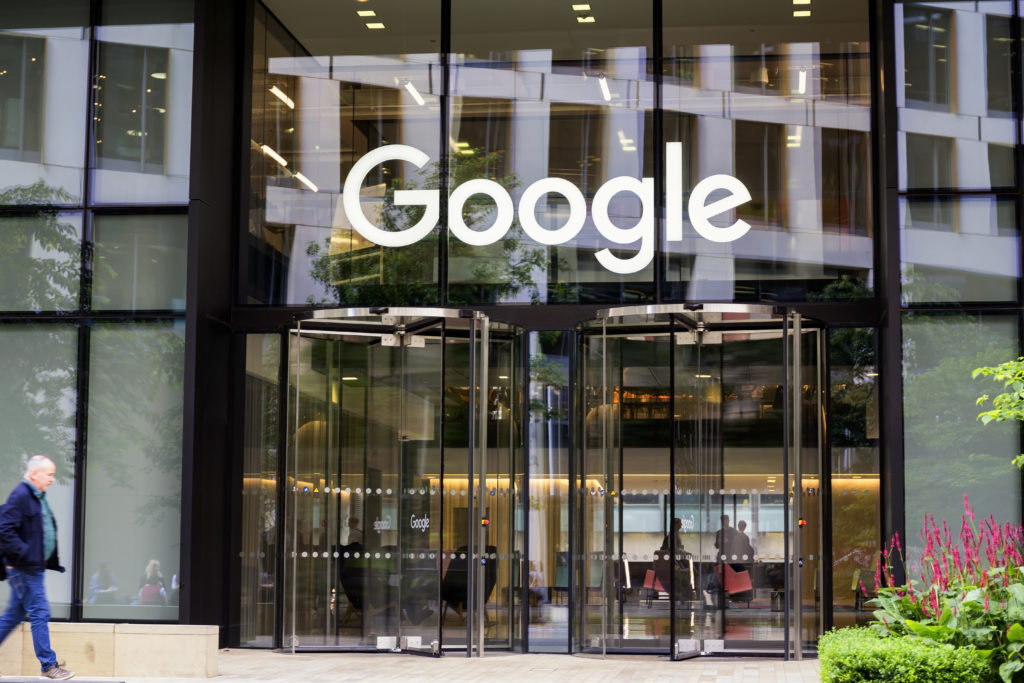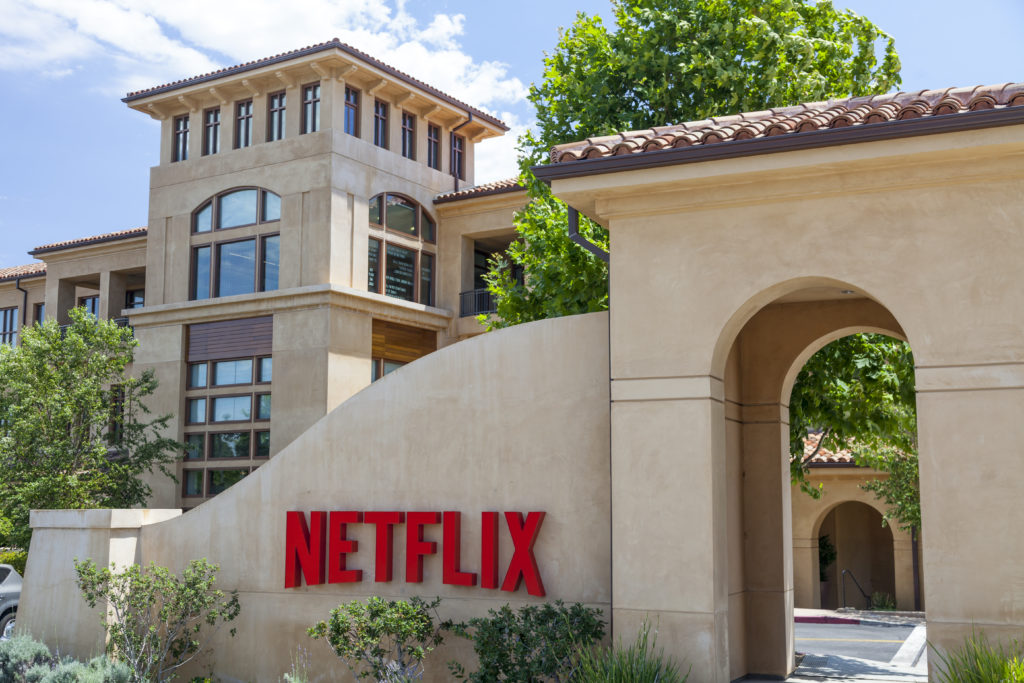
Employees want their time and efforts to be appreciated in ways that extend beyond just a paycheck. They want to feel recognized as individuals, and they want to be treated like valuable human resources. As an employer, you can accomplish this through employee recognition programs.
It’s no coincidence that many of the companies with the top employee recognition programs are known for their success. Employees give a lot to the organizations they work for, so they want to see that their employer is willing to do the same for them.
So, what should you know as you get started with building your employee recognition program?
What makes a good employee recognition program?
Employee recognition can take many forms. Some companies recognize employee accomplishments with Hollywood-style awards ceremonies, while others manage to pin notes of appreciation to an office bulletin board. A small handwritten note from a manager or colleague to an employee can have an impactful effect on the individual’s work ethic and go a long way in enhancing the employee and manager relationship.

Show that hard work doesn’t go unnoticed. Making sure employees feel valued can even be as simple as highlighting a team’s or individual’s accomplishments at staff meetings.
Employees want a company with a top employee recognition program that engages with their cultural needs, encourages work-life balance, and provides opportunities for professional development and advancement. So how can you respond to employee needs in a way that leaves your workforce happier and healthier? That’s where your employee recognition program comes in.
In this post, we will go over the primary components of employee recognition and the benefits of employee recognition. Plus, we’ll learn how to jump start your employee program for rewards and recognition.
“An engaged employee is emotionally committed to your organization and its goals.”
Without This, Your Employee Recognition Program Will Fail
Before going any further, let’s talk about the one thing your employee recognition program will fail without: communication.

Companies like Twitter, LinkedIn, and Google are nailing employee recognition partially because they boast company cultures that make employees feel informed. Focus on communicating to your employees and higher productivity, happiness, lower turnover, and an increased bottom line will follow. Here are some ways to boost communication within your company.
Define Your Company’s Core Values
Think of your employees as another kind of customer. They have a lot of options in today’s harsh job climate, so you need to convince them that your organization offers something special.
You need to brand yourself not just as a company, but as an employer. While working to create an employer brand, you first need to define your organization’s mission, core values, and goals. More importantly, you have to instill them in your employees.
What is your company’s long-term vision? Why was the company founded? What product or service is it delivering, and how does it distinguish itself from competitors? How does your organization fit into the community, locally and globally? What qualities do you most value in your employees? How do you stand out among others as a company with the best employee recognition program?
Once you’ve defined yourself as an employer, you can utilize your employer brand not just during the hiring process, but as a way to foster and retain engaged employees.
Commit Yourself to Transparency
At larger corporations, it’s naturally harder for individual employees to feel heard.

The easiest way to increase communication within a company is to encourage managers to commit themselves to transparency within their team(s). This can mean increased one-on-ones, monthly updates on what the team’s goals are, and how each employee fits into the larger company’s mission. Fostering a culture of communication puts you in a position to respond to employee dissatisfaction before it turns to disgruntlement. And there’s more to it than leaving the office door open.
Providing a company-specific online communication platform can give employees a place to easily communicate with each other while still maintaining a separation between their personal social media presence and their professional one. For instance, nearly half of Recreational Equipment, Inc.’s (REI) employees regularly log on to read and participate in discussions with other employees on its online “Company Campfire.”

Remember: communication is a two-way street. While you should be listening to what your employees have to say, you should also take the time to clearly articulate the company’s beliefs and goals. People are inherently driven by stories, and it’s important to relay your company’s narrative in a way that resonates with employees.
Keep your message clear and concise for maximum impact, and reinforce it not just through words, but through actions. Employees want to know where they fit into their organization’s big picture. They want to understand the “why” of what they’re doing as well as the “how.” Employees who have a strong grasp of their company’s goals are much more likely to report feeling recognized and engaged at work.
“An engaged workforce outperforms their competitors by 150%.”
Once you’ve defined your employer brand and learned how to clearly communicate it, you need to build a company culture to match. Organizations with a defined employer brand tend to have higher levels of engagement and low employee turnover.

Southwest Airlines, for example, defines itself as fun, fast, and friendly, and has developed an employee culture to match it. Google, a creative innovator, fosters a playful environment in its offices with a variety of spaces for employees to work, play, or even nap. Studies show that having a dog in the office, for instance, can decrease stress, raise morale, and even encourage more employee collaboration. Some employers may try to make their workplaces feel more welcoming and casual by allowing employees to bring their pets to work.
A distinct corporate culture offers clarity. It allows employees to more intuitively grasp what an organization stands for, which in turn encourages employee loyalty. An intentional culture also helps make sure that the candidates who are the best fit for your organization are more likely to apply.
The Basics of Driving the Best Employee Recognition Program
Now that we’ve discussed the key elements of encouraging employee recognition, it’s time to break down how to put a great employee program into action.
Provide Professional Development
Professional development opportunities are one of the most effective forms of employee recognition. Employees that feel they have opportunities for professional growth are much more likely to stay with an organization than those who don’t see a clear path of career progression.

Many organizations benefit from offering tuition reimbursement or subsidized coursework to employees. Google, for example, gives employees a $12,000 tuition reimbursement a year, broadcasting its commitment to investing in people as well as technologies. Continuing education offers a way for employees to take on new challenges and fight boredom. Professional development programs not only help employees feel more engaged at work, but they also help them refine their skills.
Internal mentorship programs are a low cost way to help employees connect with their colleagues while reaching their professional goals. In addition to the social and skill-sharing benefits of a mentorship program, senior staff are recognized for their expertise while newer employees are given an extra network of professional support.
Supporting professional development programs doesn’t only result in a more highly skilled workforce. It helps employees feel like a valuable resource worth investing in. This in turn helps cement their personal and professional connection to the company they work for.
Encourage Healthy Living
According to Gallup’s “State of the American Workplace” report, there is a direct correlation between employee health and employee recognition.

Engaged employees are more likely to be in better health and have healthier habits than employees who are disengaged. They eat well, exercise more regularly, and eat more fruits and vegetables than their disengaged counterparts. Employer-sponsored wellness programs not only improve your workforce’s quality of life, but they also reduce the productivity costs associated with chronic illness. When building the best employee recognition program, make sure to take employee wellness into account.
The best way to support employee wellness is to make healthy habits accessible and convenient. For companies that already have an employee cafeteria, providing delicious and healthy options can go a long way towards improving employee nutrition. Google employees often list the many free cafes and restaurants on the main employee campus as among their favorite perks, as it allows them to eat well and socialize with their co-workers at the same time.

Of course, not all of us have access to a vast network of subsidized cafeterias. However, there are still ways to foster a culture of employee wellness. One thing you can do is offer healthy snacks like fruit, vegetables, nuts, and unsweetened iced tea alongside or instead of the usual sugary and salty snacks in the employee break room. Introduce employees to a local Community Supported Agriculture (CSA) so that they can enjoy regular deliveries of fresh produce while supporting local farms. Many CSAs even offer produce drop-off at the office, which gives employees a chance to swap rutabaga recipes while picking up their latest boxes of produce.
Another method of encouraging wellness is offering workplace exercise classes, which gives employees opportunities to socialize while simultaneously helping them stay active. For example, Pinterest hosts a bi-weekly running club for its employees while Airbnb offers weekly yoga classes. In fact, studies show that exercise, particularly aerobic exercise, boosts memory and brain function.
“Make healthy habits accessible and convenient.”
Even for smaller organizations without an in-house cafeteria or gym, there are many ways to show employees that you care about their health. Consider providing memberships to a local gym or a series of group exercise classes. Organize an intramural sports team and play against other companies. Offer access to a grocery delivery service that helps make cooking at home easy and fun. By investing in employee wellness, you can help employees stay happier, healthier, and more engaged.
Help Simplify Your Employees’ Lives
The average employee has a lot on their mind. While dodging traffic on the way to work, your employees may be worrying about taking their laundry to the dry cleaners, walking the dog, finding a decent babysitter to watch their children after school, and defrosting their refrigerators.

By streamlining employees’ days and making their personal lives easier, you can help them achieve a better work-life balance. Offering flexible hours and occasional telecommuting options gives employees a respite from a stressful commute. Employees who are given more flexibility in their schedules report higher job satisfaction than those whose schedules are completely rigid. Employees who choose to take an earlier or later than average start time to their workday can avoid the usual commuter rush, lowering their stress levels.
Employees who are allowed to work from home tend to voluntarily put in longer hours than employees who must set aside time to shuttle themselves back and forth to the office. While in-office socializing is important for helping a team bond, allowing a certain amount of schedule flexibility can result in a happier, more productive workplace.

Also, consider offering transit-related benefits, such as public transit vouchers, transportation stipends, or a pre-tax transit deductible. When public transit is less reliable, rideshare or other transit services can go a long way towards showing appreciation towards employees putting in late nights.
Companies with highly engaged employees do everything they can to make those employees’ lives easier. Facebook has an on-site bank, dry cleaners, dentist’s office, doctor’s office, and bike repair shop in the center of their corporate campus. Dropbox offers an onsite barber. Some companies even offer on-site concierge services, so that employees don’t have to wrangle data and pick out flowers for a dinner party at the same time. Google is known for its excellent free daycare program, which allows parents to work without having to worry about arranging childcare.
Reliable childcare is a daily essential for employees with children. While some larger organizations offer in-house childcare for their employees, partnering with a third-party childcare service is another way to be attentive to the needs of working parents. Offering in-office laundry pick-up can help any employee’s day run more smoothly.
When employees don’t have to worry as much about a stressful commute or the pile of dirty socks in their laundry hamper, they have more time and energy to devote to work. Fewer distractions means greater focus on the task at hand. Employees can also utilize their free time more efficiently, spending their time off enjoying the things they really want to do.
Encourage Employees to Embrace Their Free Time
Even the most engaged employees will burn out without sufficient down time. Stress, and all the physical and emotional health problems that accompany it, can sap an employee’s productivity. By helping employees make the most of their days off, you can help ensure that they return to the office refreshed, inspired, and ready to work.

Physical and mental health are deeply interconnected. Long hours at a desk can result in various aches and pains, and many companies benefit from having a masseuse or acupuncturist stop by the office for impromptu appointments with employees or as a feature of an office-wide wellness day. A stressful workday becomes a lot less stressful when employees know they have a massage waiting for them at the end of it.
Encouraging employees to take advantage of some of the local arts and culture scene is a great way to help them relieve stress and boost their creativity. Free passes to local museums, zoos, concerts, film festivals, a lecture series, and theaters are a wonderful form of employee recognition. Arts and culture programs also encourage employees to immerse themselves in the city they live in.
When looking for ways to kick-start an employee arts program, try contacting local opera houses and classical concert halls. They are often looking for ways to boost attendance, and many will happily offer group rates on tickets. Outside of the formal arts scene, movie tickets are hugely popular among employees because they can appeal to anyone’s interests. Dreamworks hosts film screenings for its employees, which functions as both a way to wind down and an opportunity to socialize. But even if you aren’t a movie studio, it’s easy to organize communal film screenings in your own workplace. All you need is a projector, some comfortable chairs, and a few bowls of popcorn.
Nearly everyone offers paid vacation days to their employees. How can you take next steps in encouraging employees to fully take advantage of their time off?
Companies like Netflix and Evernote actually offer unlimited vacation days as one of their employee perks. They claim that an unlimited vacation days policy gives employees more opportunities to recharge, all the while fostering trust and respect between employees and management.

While an unlimited vacation policy might not suit your organization, there are other ways to show employees that you want to help them make the most of their time off. For example, Airbnb, one of the world’s leading community marketplace for travel rentals, gives employees $2,000 a year dedicated solely to travel.
Travel can be a great way to help employees get out of the office and connect with their local environs. Depending on your location, you can try offering tickets to the ski slopes, passes to nearby national parks, surfing lessons, or even simply maps of local hiking trails. Even if it’s just a weekend day trip, getting out of their usual routine is a great way for employees to recharge and refresh.
Offer Volunteering Opportunities
Employees are more likely to feel engaged when their work experience aligns with their cultural needs. Companies with the best employee recognition programs know this and implement it into their program.

According to research from the Center for Work-Life Policy, high-potential employees, especially those in Gen Y, say that having volunteer opportunities available through their workplace makes them more likely to join an organization – and to stick around once they’re there.
The benefits of individual charitable work are already well known. Giving back makes us feel good about ourselves and our community, lowering stress and raising self-esteem. What works individuals also applies to institutions. Implementing an organizational volunteer program can result in a more engaged workforce.
Some organizations support their employees’ charitable interests by offering to match employee donations or offering a set amount of paid time off for volunteer work. Corporate volunteer days are a great way to build an employee recognition program while giving back. A day of turning an empty lot into a community garden or delivering meals to the elderly gives employees a break from their usual routine and allows them to socialize outside of the office environment, resulting in a stronger, cohesive team mentality.
Volunteering allows employees to explore new skills and environments in a way that lets them feel good about themselves and their organizations. Corporate volunteer programs can benefit organizations of all types and sizes.

Employees at Timberland have the option to take service sabbaticals equaling up to 40 hours of paid volunteer work every year. LinkedIn launched a “LinkedIn for Good” program, which seeks to connect both its employees and members with volunteer opportunities that match their skills.
Organizational charitable opportunities also tie back into the idea of building an intentional culture. By showing that your organization is socially conscious and engaged with its local community, you are more likely to attract and retain candidates who are equally engaged.
When planning a corporate volunteer day, check in with local charitable organizations to see what your options are. Many nonprofits are already adept at hosting corporate volunteer days and will happily provide you with the tools you need to get started. Once you’ve narrowed down a list of options, let your staff give feedback as to which volunteer opportunity would be most meaningful to them. Depending on the size of your organization, you could even divide your staff among different organizations to make the widest possible impact while allowing staff to choose how they’d like to give back.
Final Thoughts
Is an employee recognition plan really worth it? Absolutely.

Consider the figures regarding how much the economy is losing simply because of unhappy or dissatisfied employees. It can almost come as a shock that so many companies still minimize the impact of an employee recognition program.
If management takes the time to make employees happy, companies have the potential to gain a huge advantage over the competition by over 200% and see sales numbers that are more than 30% higher than the norm.
Plus, happy employees are measurably more productive and three-times more creative in their thought processes than their discouraged, unhappy counterparts. Which employee would you rather have working for you?
Building the best employee recognition program starts with your company culture. Identify what values are most important to emphasize when recognizing employees for their hard work, and build your program around those. Then, use the tips outlined above to get started on building a place where employees love to work.
Want to learn more? Request a demo with Fond to see how we can build your employee recognition program.
 Erin Nelson is a Digital Marketing Manager at Fond with over six years of B2B SaaS marketing experience. Erin has authored dozens of articles on employee rewards and recognition and frequently researches new trends in R&R. In their spare time, you can find them playing music, reading about socioeconomic and gender-based politics, and listening to true crime podcasts.
Erin Nelson is a Digital Marketing Manager at Fond with over six years of B2B SaaS marketing experience. Erin has authored dozens of articles on employee rewards and recognition and frequently researches new trends in R&R. In their spare time, you can find them playing music, reading about socioeconomic and gender-based politics, and listening to true crime podcasts.
